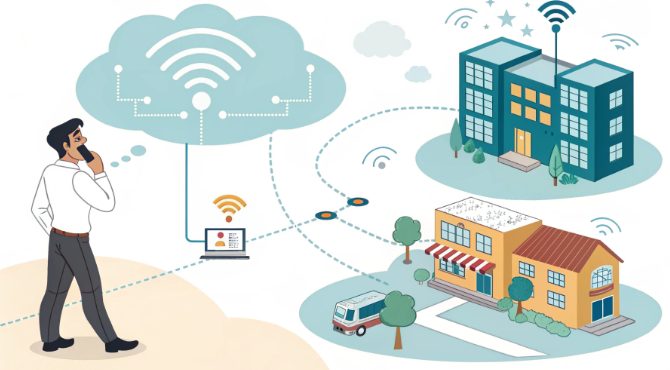Should Small Enterprises Choose Bandwidth or Traffic Billing

Technical Foundation: Understanding Billing Models
In the realm of hosting infrastructure, the billing paradigm significantly impacts operational efficiency and cost management. For SMEs leveraging Hong Kong hosting solutions, choosing between bandwidth-based and traffic-based billing models requires a deep technical understanding of network resource utilization patterns.
Bandwidth-Based Billing: Technical Deep Dive
Bandwidth-based billing operates on the principle of peak throughput measurement, typically calculated using the 95th percentile methodology.
- Measurement Mechanism: Server bandwidth utilization is sampled every 5 minutes
- Data Analysis: Samples are sorted in descending order
- Billing Calculation: Top 5% of readings are discarded to account for traffic spikes
- Final Rate: The highest remaining value becomes the billing baseline
Technical advantages of bandwidth-based billing:
- Predictable monthly costs
- Optimal for consistent traffic patterns
- Better suited for streaming and real-time applications
- Simplified capacity planning
Traffic-Based Billing: Technical Analysis
Traffic-based billing implements a cumulative data transfer measurement system, focusing on actual bytes transferred rather than capacity allocation.
- Measurement Unit: Gigabytes (GB) or Terabytes (TB) transferred
- Calculation Period: Monthly cumulative data transfer
- Direction: Both ingress and egress traffic counted
- Overages: Additional charges beyond included transfer quota
Technical Implementation Considerations
Network engineers must consider several technical factors when implementing either billing model:
- Traffic Pattern Analysis
- Peak hours utilization
- Data transfer seasonality
- Geographic distribution of requests
- Cache hit ratios
- Infrastructure Requirements
- Load balancer configuration
- CDN integration points
- Edge caching strategies
- BGP routing optimization
Hong Kong Hosting Infrastructure Specifics
Hong Kong’s strategic position in APAC’s network topology offers unique advantages for hosting infrastructure:
- Direct connectivity to major Asian networks
- Low-latency access to mainland China
- Robust peering arrangements with global carriers
- High-capacity submarine cable connections
Technical Decision Framework
Implementation of a systematic decision-making process requires quantitative analysis:
- Baseline Metrics Collection
- Current traffic patterns over 30-day periods
- Peak-to-average ratio analysis
- Growth trajectory projections
- Application layer requirements
- Cost Modeling
- Fixed vs. variable cost comparison
- Burst capacity requirements
- Redundancy considerations
- Scaling cost implications
Performance Optimization Strategies
Network architects should implement these optimization techniques to maximize cost-efficiency:
- Traffic Shaping Implementation
- QoS policies configuration
- Rate limiting parameters
- Burst handling mechanisms
- Caching Architecture
- Multi-layer cache deployment
- Cache invalidation strategies
- Dynamic content optimization
Technical FAQ for System Administrators
Critical considerations for infrastructure management:
- Bandwidth Calculation
- Tools: MRTG, Cacti, Prometheus
- Measurement intervals: 5-minute samples
- Data retention policies
- Traffic Monitoring
- NetFlow analysis
- SNMP polling configurations
- Alert thresholds setup
Technical Recommendations
Based on empirical data and technical analysis:
- Choose bandwidth-based billing when:
- Running streaming services
- Hosting real-time applications
- Maintaining predictable traffic patterns
- Opt for traffic-based billing when:
- Operating batch processing systems
- Managing variable workloads
- Running development environments
Conclusion
The selection between bandwidth and traffic-based hosting billing models requires careful technical evaluation of infrastructure requirements, traffic patterns, and scaling strategies. For SMEs utilizing Hong Kong hosting services, this decision significantly impacts both operational efficiency and cost optimization. Implement continuous monitoring and adjust your strategy based on actual usage patterns and performance metrics.

